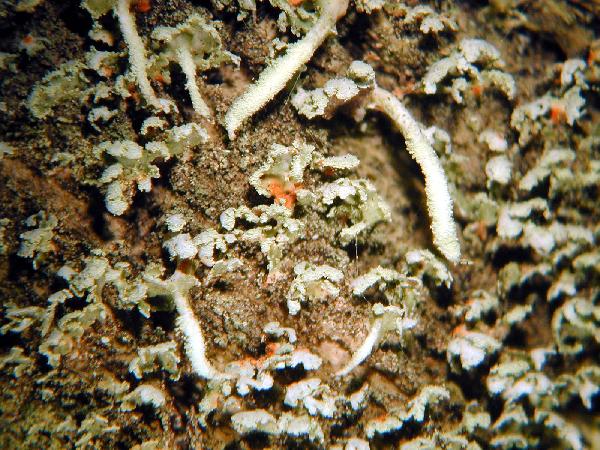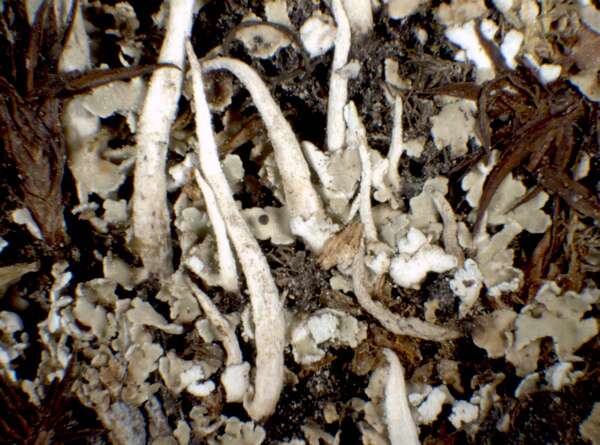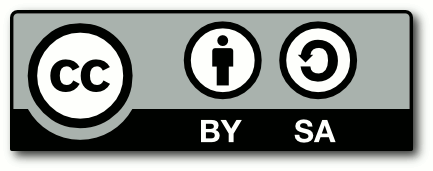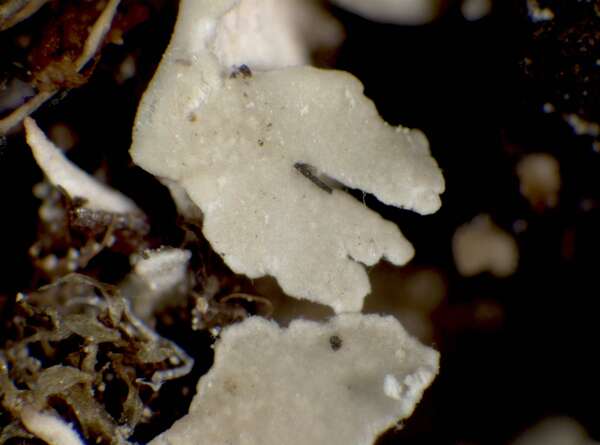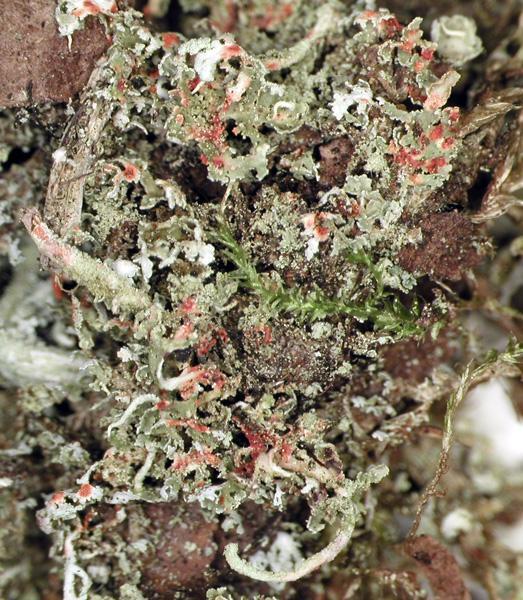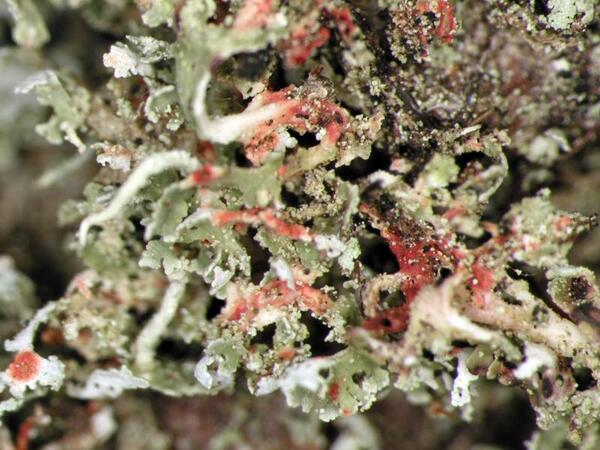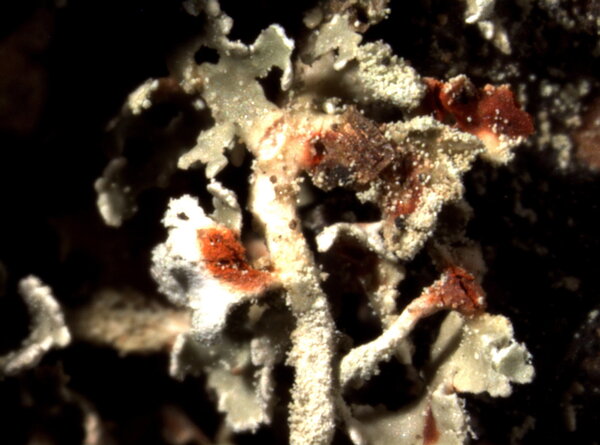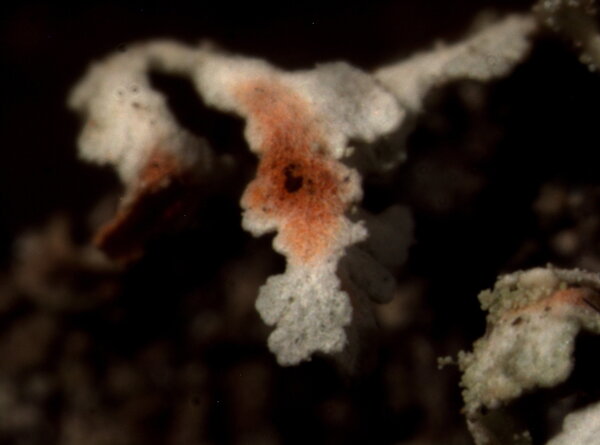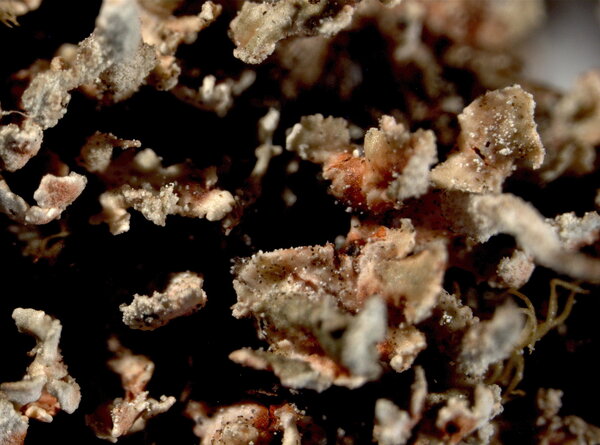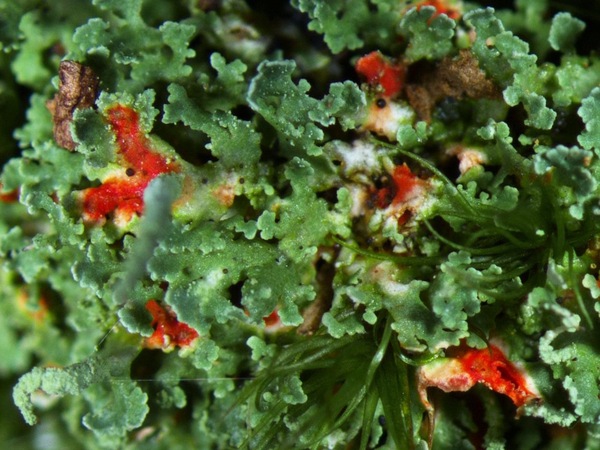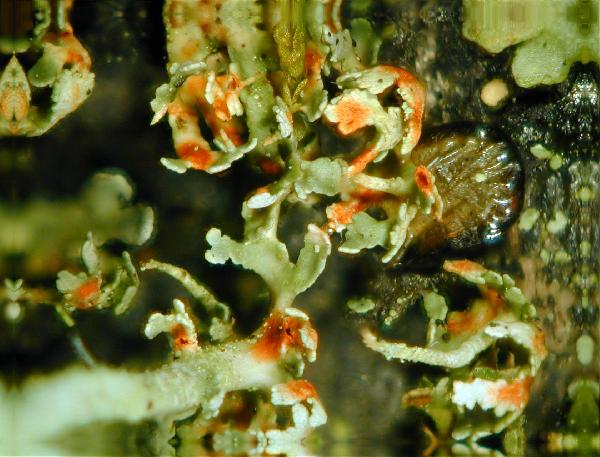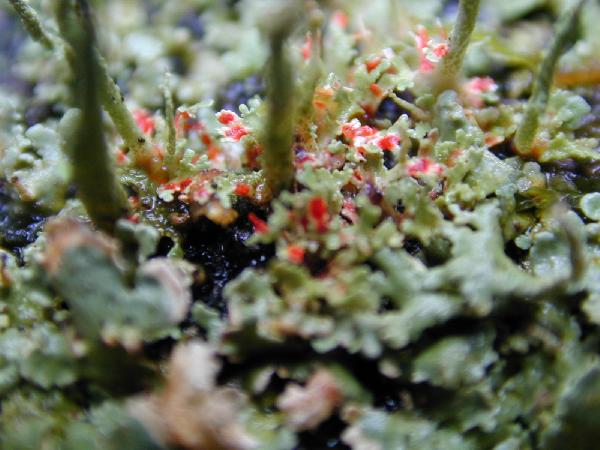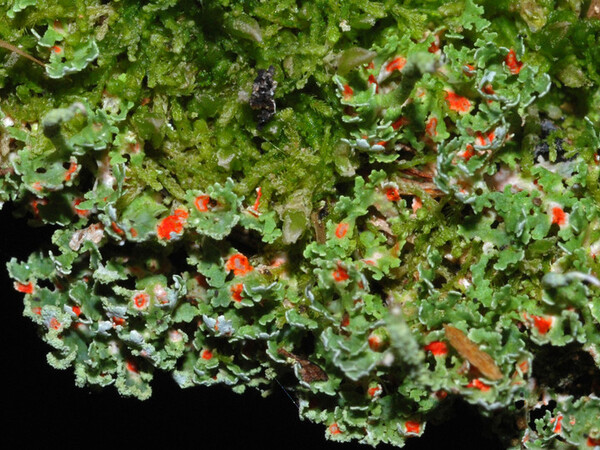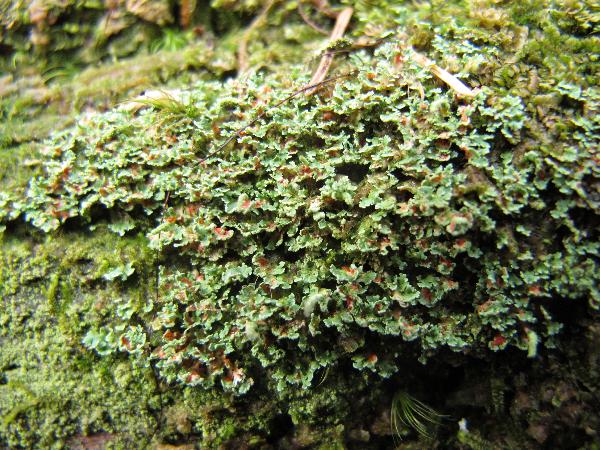Cladonia rubrotincta Vtípilová, Timdal, Resl & Steinová
Lichenologist (2025): 7, 2025.
Synonyms: Cladonia norvegica auct. Ital.
Distribution: N - Frl, Ven. S - Cal (Puntillo 1996).
Description: Primary thallus squamulose, the squamules usually persisting, small, 2-4 mm wide, deeply incised or narrowly lobed, green above, white beneath, often with bright red spots, sometimes sorediate along margins and on the lower side. Podetia bacilliform, slender, hollow inside, 1.5-2(-3) cm tall, usually cupless and pointed, rarely with very narrow cups in fertile specimens, pale green, grey-green or whitish, sometimes with red spots at base, the surface partly corticate and occasionally squamulose in basal parts, otherwise farinose-sorediate, the soredia 20-50 μm in diam. Apothecia rather rare, ochraceous or pinkish brown, subspherical, terminal. Asci 8-spored. Ascospores hyaline, ovoid to oblong, 12-15 x 3-4.5 μm. Pycnidia developing at tips of podetia, with a colourless jelly. Conidia hyaline, curved. Photobiont chlorococcoid. Spot tests: K-, C-, KC-, P-, UV+ bluish white. Chemistry: barbatic and 4-O-demethylbarbatic acids; rhodocladonic acid in the red spots on primary squamules and podetia (not in the apothecia!).Note: a recently-described, cool-temperate to boreal-montane species, formerly treated as C. norvegica by Italian authors, found on decaying trunks and stumps, in moist-shaded habitats such as ancient, undisturbed woodlands and, when epiphytic, on basal parts of conifers; probably more widespread in the Alps, but very rare in Southern Italy. It is included in the Italian red list of epiphytic lichens as “Endangered” (Nascimbene & al. 2013c).
Growth form: Fruticose
Substrata: bark and lignum
Photobiont: green algae other than Trentepohlia
Reproductive strategy: mainly asexual, by soredia, or soredia-like structures (e.g. blastidia)
Most common in areas with a humid-warm climate (e.g. most of Tyrrenian Italy)
Commonnes-rarity: (info)
Alpine belt: absent
Subalpine belt: extremely rare
Oromediterranean belt: absent
Montane belt: very rare
Submediterranean belt: absent
Padanian area: absent
Humid submediterranean belt: absent
Humid mediterranean belt: absent
Dry mediterranean belt: absent
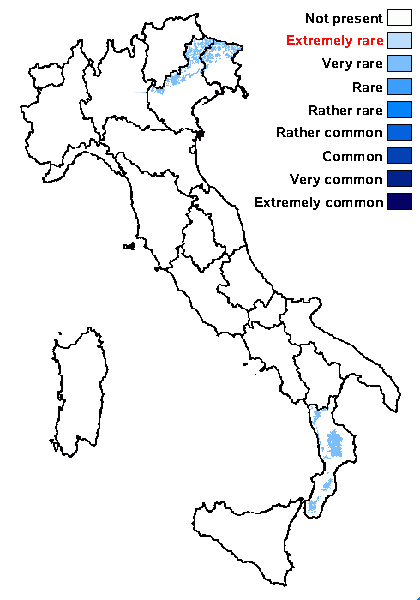
Predictive model
Growth form: Fruticose
Substrata: bark and lignum
Photobiont: green algae other than Trentepohlia
Reproductive strategy: mainly asexual, by soredia, or soredia-like structures (e.g. blastidia)
Most common in areas with a humid-warm climate (e.g. most of Tyrrenian Italy)
Commonnes-rarity: (info)
Alpine belt: absent
Subalpine belt: extremely rare
Oromediterranean belt: absent
Montane belt: very rare
Submediterranean belt: absent
Padanian area: absent
Humid submediterranean belt: absent
Humid mediterranean belt: absent
Dry mediterranean belt: absent

Predictive model
 DOLICHENS
DOLICHENS
